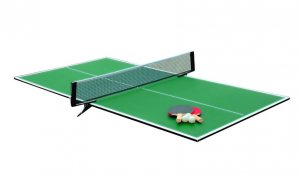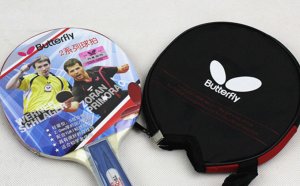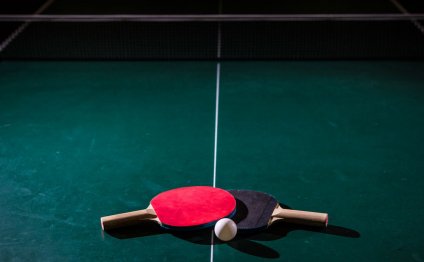
Top Table Tennis rubbers

Summary
You can notice that most of our rubber sheets have ratings of speed, spin, and control. A speed rating below 50 means very good control. From 50-70 is a good all-around rating and anything over 70 we consider fast for offensive play.
The preferred rubber sheets are mostly smooth inverted and sticky. Some players are still using the pips out for faster and more direct shots. Others may use long pips on one side, that imparts a knuckle ball effect and reverses the opponents spin. A small percentage of players use an anti-spin rubber for defense which also reverses the opponents spin. Long pips and anti spin are mostly used for easy control against spinny serves and loops, but it also takes more practice and more time to get used to. The sponge behind the rubber comes in different thicknesses, from 1.2 mm to 2.5 mm. The sponge thickness and the top sheet color (red or black) can be selected before you add a rubber sheet to the shopping cart.
The thinner the sponge the better the control, a thicker sponge gives you more speed with less control. It is therefore possible to slow down a fast racket by using a rubber with thinner sponge. Some players will use a fast offensive rubber on the forehand and a slower more controllable sheet on the backhand. All rubber sheets are priced per sheet only. For a complete racket you will need 2 rubber sheets.
Rubber FAQ
by Jason R. Shaver (Megaspin.net partner)
How does the sponge thickness affect performance? If it affects speed, why are rubbers sheets given one speed rating irrespective of the chosen thickness?
The quick and easy rule is that thicker sponges (2.0mm or more) results in more offensive play. 1.9mm to 1.5mm is used by more 'control' or all around players while smaller numbers is common for short and long pipped rubbers.
When you swing at a ball and make contact, the sponge catches the ball and slows it down. As the ball keeps moving into into the sponge and hits the wood underneath, the sponge helps kick the ball back out.
While the whole above process of catching and throwing the ball, the sponge allows the rubber topsheet to put friction on the ball, adding larger amounts of spin than could be achieved without the sponge.
When looking at the speed and spin ratings of different rubbers, you may notice that they don't break them down by different sponge thicknesses. This is because the effect of the sponge changes depending on how you hit and play. For example, if you take a soft swing, the sponge would slow the ball down (by absorbing the impact), but a hard loop will speed up your shot (by allow you to take bigger swings.
Some rubbers are labeled by thickness (in millimeters) such as 1.9 or 2.0, while others are labeled as MAX, MX, or Maximum. ITTF rules state that the maximum of the sponge and topsheet cannot be greater than 4.00mm. There is no hard rule to how thick the rubber topsheet is (1.4mm to 1.7mm are common thicknesses for topsheets), so sponges labeled as Maximum are produced by the manufacturer to be as thick as they can while still staying under 4.00mm, usually they include a large enough margin of error to counteract the thickness of the glue used to attach the rubber to the blade.
Why does the hardness of a rubber sheet matter?
The degree represents how hard the sponge is. A lower number means a softer sponge, a higher number means a more firm sponge. To give an idea rubber-band is around 25, a car tire is around 80. Most table tennis rubbers will be between 30 and 45.
A lower number will tend to provide more spin at lower speeds (including serves). A higher number will tend to provide more spin at higher speeds. Players who tend to play a 'Chinese' style (straighter elbow when looping) will find a higher number to be better. Players who tend to play an 'European' style (bent elbow when looping) will find a lower number to be better. Higher rated players will tend to enjoy a higher number than beginnersBeginners (under 1200 USATT rating) will not be able to feel a difference. When in doubt, choose a lower to medium number.
What is a high tension/pre-tensed/tensor rubber sheet?
With the banning of VOC based glues (such as speed glues) and booster, manufactures need another way to provide the extreme spin. Speed glue worked by swelling the sponge with what is basically a combination of rubber cement and paint thinner. This has the effect to massively stretching the topsheet beyond what would be done with normal manufacturing. Tension rubbers are rubbers where the topsheet is streatched before gluing to the sponge during manufacturing.
There are two different methods of 'tensioning' rubber, chemical and mechanical:
Mechanically tensioned rubbers are produced by gluing the rubber topsheet to the sponge in a chamber negative pressue (such as a weak vacuum), this causes the sponge to expand (visualize a marshmellow in a microwave). Chemically tensioned rubbers are produced by the same basic method as normal speed gluing, but the solvent is soaked into the sponge itself instead of the glue. This allows stronger glues to be used which keeps the effect active for much longer than typical speed-glues and boosters.It seemed that each brand has their own twist to the above processes, here are some highlights:
Butterfly High-Tension Spring Sponge Donic Yinhe Max Tense High-Tension MoxA Xiom YasakaWhat is anti-spin rubber?
An anti-spin rubber is a specialty rubber built to generate no spin on the ball at all. The term anti-spin is actually kind of a misnomer. The rubber does not automatically produce 'flat' shots, but instead it tends to 'reverse' the spin coming at you. If your opponent produces a hard top-spin shot, your return show will have a good amount of backspin.
Anti-spin topsheets are generally hard (and durable) and slick, more like a hard car tire than a normal table tennis rubber. The sponges range from medium soft to extremely soft. This has the effect of slowing the ball down, even to the extreme where dropping a ball on the rubber barely produces a bounce. The best example of this is the Butterfly Super Anti and Butterfly Super Anti Special.
There are two core groups who use anti-spin rubbers, "combination bat" players and beginning "modern defender" players. For combination bat players, anti-spin rubber (especially with soft sponges) allow the player to deal with hard, fast loops and drives and the speed changes can really throw off opponents. For modern defenders, the long term goal is usually to move on to long pipped rubbers, but by starting with anti-spin allow the player to focus on the fundamentals of their style.
RELATED VIDEO
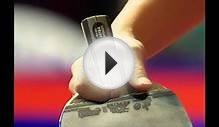
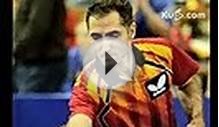

Share this Post
Related posts
Butterfly Table Tennis Table Top
How to Choose the Best Table Choosing a Ping Pong table you will like is important when tables can be so expensive. However…
Read MoreButterfly Table Tennis Top
The Butterfly Easifold 19 Rollaway table tennis table, Butterfly’s newest rollaway addition, is the ideal choice for those…
Read More
